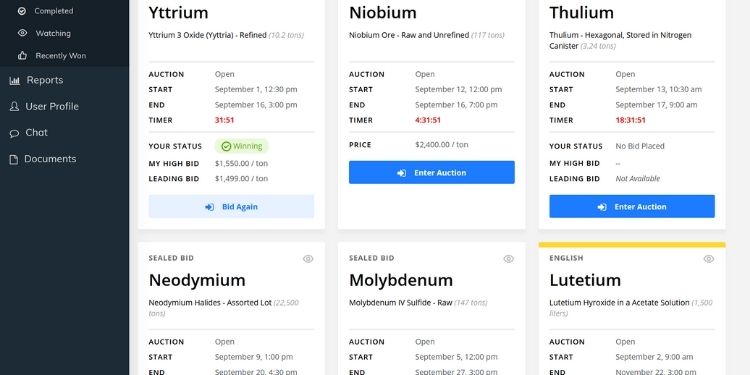How the Reverse Auction Software Really Makes Things Easier

For the past ten years or so, reverse auction software have strongly influenced how Purchasing departments manage their calls for tenders. For buyers, this gives them a better understanding of the state of supply and demand, saving time and saving on purchasing costs. The result is a more efficient Purchasing team.
However, the use of reverse auctions by the Purchasing function also presents challenges and risks, including the risk of deterioration of the relationship with strategic suppliers. To take advantage of the use of reverse auctions, you must consider the nature of the products or services to be sourced, the state of the market and the importance of the buyer-supplier relationship.
Thus, during the 2000s, companies began to use reverse auctions for their sourcing activities. However, these first attempts turned out to be rather laborious, with suppliers facing fierce competition based solely on price. In addition, the technology of the time made the process tedious with systems that were rigid, complex to configure for buyers and complicated to use for suppliers.
Table of Contents
ToggleHow Does A Reverse Auction Work?
In a reverse auction, sellers compete for the lowest bid. Thus, a reverse auction introduces a degree of competition between sellers in a bidding process. However, the lowest bidder does not necessarily automatically win the contract.
Auctions are organized using Reverse Auction Software dedicated to the management of calls for tenders. Much software exists on the market, from the simplest to the most complex. If you’ve never had a reverse auction before, you can experiment in the software sandbox to create a test reverse auction for free and see how it works.
Benefits of Reverse Auctions
There are significant advantages to using reverse auctions.
For the buyer, it is a way to have a better understanding of the market price. Especially for categories where the price varies greatly, reverse auctions are the best way to have visibility on the current price. This is the case for categories strongly linked to the price of raw materials, which will fluctuate greatly.
Other advantages expressed by buyers are based on reduced purchasing costs, interaction with a wider panel of potential suppliers, and ultimately an improvement in the purchasing process.
Reduced Purchasing Costs
In the current context, with increasing pressure on the Purchasing teams to generate gains that will be reflected in the income statement, the additional cost reductions negotiated through reverse auctions present a significant advantage.
For companies in infrastructure, telecommunications, heavy industry, these additional savings amount to millions of euros per call for tenders. And therefore offer a positive ROI from the first use. Moreover, buyers can quickly build the business case to present to their management to convince them to equip themselves with a software solution giving them this possibility.
And now, the use of reverse auctions is no longer limited to large groups. Intermediate-sized companies also want to have this negotiation tool at their disposal.
New software on the Internet in SaaS mode makes it possible to set up a reverse auction in a few clicks and at a lower cost. There is also software for managing calls for tenders that allow you to create a call for free tenders and pay for a license only on a case-by-case basis.
Towards A More Efficient Market
The ability to connect buyers with sellers in an open and transparent environment is fundamental to giving an indication of the actual value of a product or service. Reverse auctions do this very effectively. And this is thanks to a set of factors:
- Suppliers have a degree of visibility over other available offers. This allows them to come up with their best deal.
- Using an online reverse auction removes location constraints, no matter where the seller is, they can bid.
Current tender management software enables the efficient management of a large number of suppliers, making it possible to receive offers from many potential suppliers in a context that is transparent to everyone. In addition, with Spot Auctions, buyers take advantage of the temporary excess capacity of their suppliers.
The efficiency of the Purchasing Process
Another advantage is the increased fluidity of the Purchasing process for both buyers and sellers. For example, with reverse auctions, a process that traditionally would take days and weeks to collect bids, compare them; get back to suppliers to re-negotiate, with reverse auctions, this cycle can be completed in a matter of hours or days. In a sense, with online reverse auctions, buyers delegate price negotiation to a process where sellers negotiate with each other.
If you want to get more information about Reverse Auction Software so please visit this site- https://www.auctionsoftware.com/
Alfred Williams, a distinguished business writer, navigates the corporate landscape with finesse. His articles offer invaluable insights into the dynamic world of business. Alfred's expertise shines, providing readers with a trustworthy guide through the complexities of modern commerce.
Recommended For You
Spread the loveThe name Broderick Bevineau makes you think of new ideas and starting your own business. Bevineau has made
Spread the loveThe popularity of Airbnb has paved the way for many entrepreneurs to build businesses in the short-term rental
Spread the loveCreating a well-designed and functional website starts long before coding begins. The prototyping phase is a critical step




